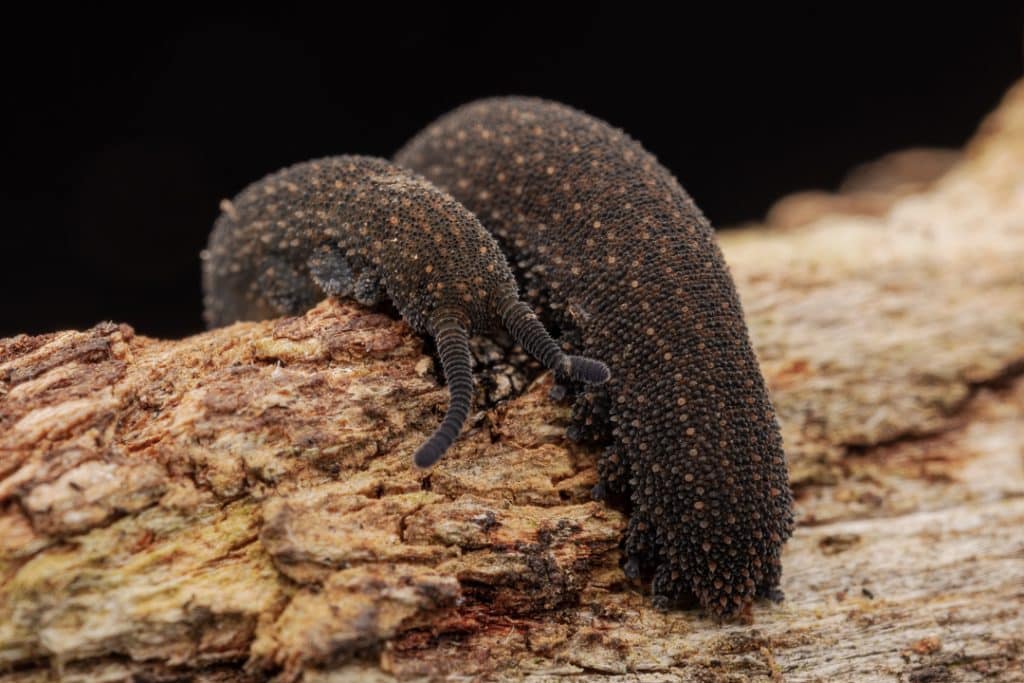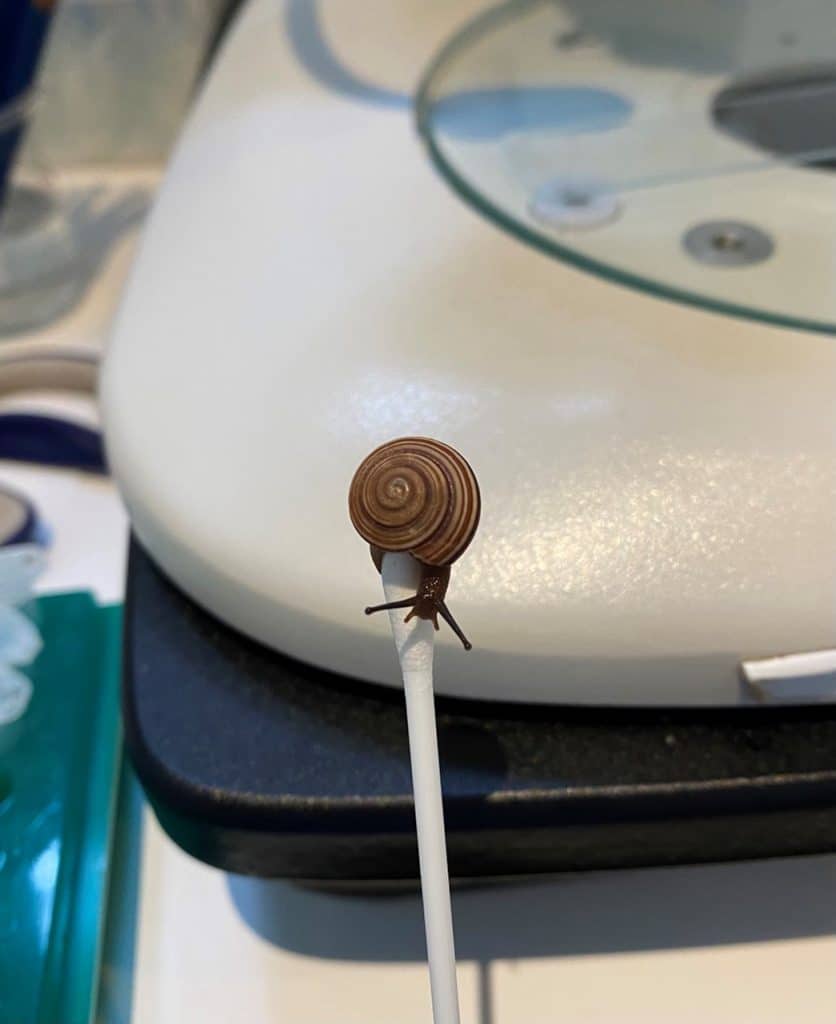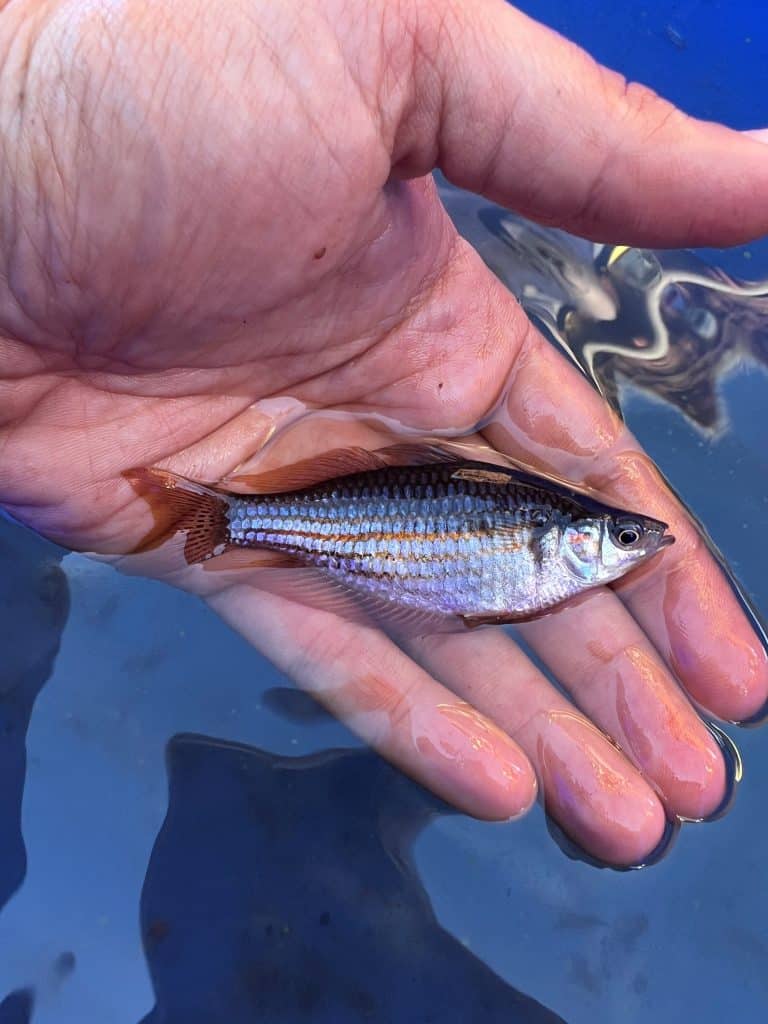Liesel Morgan Land snails often exhibit high levels of endemism and are vulnerable to habitat degradation. As such, they are…
Velvet worms are the epitome of creepy cute. To a human, they appear as a luxe version of a caterpillar: long and soft-bodied, with rows of overlapping scales called papillae that shimmer like their namesake fabric. They not so much walk as flow across the forest floor, their bodies kept rigid by hydraulic pressure that ripples through their being as they extend and contract in forward motion. Each of their stumpy little legs ends with a claw, reflected in their scientific name Onychophora, Latin for ‘claw bearers’.
But to their prey – which is pretty much any invertebrate that moves – velvet worms are a slow-motion horror movie. They creep across the forest floor, travelling only a metre per hour, then ambush their prey by ejecting a torrent of adhesive slime from two oral tubes located under their antennae. Australian species rarely grow beyond 10 cm in size yet they can capture prey several times larger than themselves in the stream of slime they can squirt up to 30 cm away. Once their prey is trapped in this tangle, the velvet worm uses its sharp jaws to break open the body and then injects its saliva to soften the tissue, which it then sucks up.

And then there’s the sex, which even by invertebrate standards is verging on alien. In some species, males place a packet of sperm indiscriminately on the body of a female. Her skin dissolves beneath the packet, the sperm enter her body and make their way to her ovaries, which they then penetrate. In other species, males place their sperm packet on their heads to present to a female in a humble offering of their DNA.
Velvet worms have long intrigued evolutionary biologists and are related to both arthropods (insects and spiders) and tardigrades (the microscopic animals known as ‘water bears’ or ‘moss piglets’). Australia is endowed with the greatest richness of velvet worms found on the planet, with 74 species currently described, and possibly up to 250 in total. By comparison, New Guinea and New Zealand each have eight described species. They are found in relatively moist coastal areas, from the tropical forests of Far North Queensland to the jarrah and karri forests of south-west Western Australia, living their best lives in rotting logs and under leaf litter.

A velvet worm is an exciting find in a day’s field work. When Biologic’s Heidi Nistelberger was recently inspecting a newly planted seedling at our Gidgegannup Biodiverse Carbon Project, she discovered a velvet worm hanging around under the leaf litter that had accumulated in the planting depression. Recreating habitat can be a slow process but this discovery shows that, even at its earliest stages, restoration plantings can provide a hunting ground for the secretive and intriguing velvet worm.
Further reading:
Velvet worm page of the Australian Museu
Phylum Onychophora page of the Key to Australian Freshwater and Terrerstrial Invertebrates
Velvet worms (Phylum Onychophora) page of Taxonomy Australia



